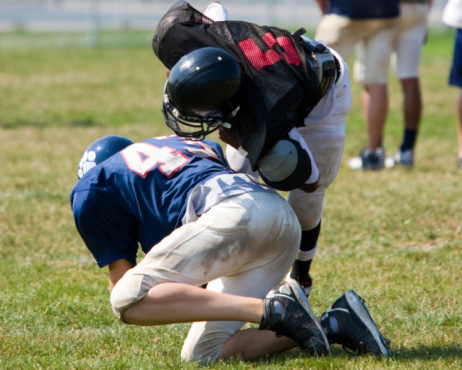For many kids, back to school means back to sports. Youth sports are a valuable experience, filled with challenges, competition and fun. Being part of a team fosters feelings of belonging, inspires collaborative play and strategy, and can be an excellent form of exercise.
Still, parents often worry about the risk of injury their children face on playing fields. Even if your child returns to school in optimal condition after a summer spent building up body, flexibility and speed, too many kids still get stuck on the sidelines with injuries, some of which are preventable.
The Centers for Disease Control and Prevention says more than 2.6 million children are treated in the emergency department each year for sports- and recreation-related injuries.
Common injuries young athletes face are often related to the skeletal and muscular systems of the body. The American Academy of Orthopaedic Surgeons stresses that children’s bones, muscles, tendons, and ligaments are still growing, making them more susceptible to injury. Fortunately, many youth-sport injuries can be prevented.
Sprains And Strains
Sprains are injuries to ligaments, or the bands of tough, fibrous tissue that connect two or more bones at a joint. Strains impact a muscle or a tendon, which connects muscles to bones. Clinical research has linked acute strains and sprains to improper warm-up before sports, fatigue and previous injuries. Pre-participation conditioning and stretching can help reduce the risk of injury.
Periostitis, Or Shin Splints
Periostitis is an overuse injury that occurs in athletes engaged in activities that involve rapid deceleration. Periostitis causes inflammation of the band of tissue that surrounds bones known as the periosteum, and typically affects people who repetitively jump, run or lift heavy weights.
To head off potential pain in the shins, young athletes can gradually build up their tolerance for physical activity. Supportive shoes or orthotic inserts can help. Incorporating cross-training into a regimen also can work.
Repetitive Use Injuries
Swimmers, tennis players, pitchers, and quarterbacks may experience a repetitive use injury. This is pain in an area of the body that is used over and over again. Inflammation of muscles and tendons may appear, but repetitive use injuries also may result in stress fractures, which are hairline fractures in bones that are subjected to repeated stress.
Rest between exercises can help alleviate these types of injuries. Use ice, compression, elevation and immobilization if pain is persistent.
Growth Plate Injuries
Growth plates are the areas of growing tissue near the ends of the long bones in the legs and arms in children and adolescents. A growth plate produces new bone tissue. If the growth plate is injured, it cannot do its job properly. That may contribute to deformed bones, shorter limbs or arthritis. Growth plate injuries most often result from falling or twisting.
While there’s no surefire way to prevent growth plate injuries, getting proper and immediate care after an injury can help prevent future problems. An orthopedic surgeon has the expertise to diagnose and treat these injuries.
Concussion and TBI
Concussions and traumatic brain injuries (TBI) have received increasing national attention. To learn more about concussion and the adolescent athlete from the National Institutes of Health, click here.
Youth Sports Injuries Are Common But Often Preventable
Warming up, being in good physical shape and not overtaxing a growing body can help kids avoid pain and impairment.
Young players must feel that it’s OK to tell coaches and parents that they’ve been hurt and that it’s time to sit out. A Safe Kids Worldwide study reported that about 42 percent of student athletes surveyed reported that they’ve hidden or downplayed an injury during a game so they could keep playing. Kids need to know that “taking one for the team” can lead to a more severe and lasting injury.
Parents and coaches should work together to create an atmosphere where young athletes can compete, have fun and reach their full potential. Together, we can keep our kids active, strong and safe so they can enjoy the sports they love for a lifetime.

